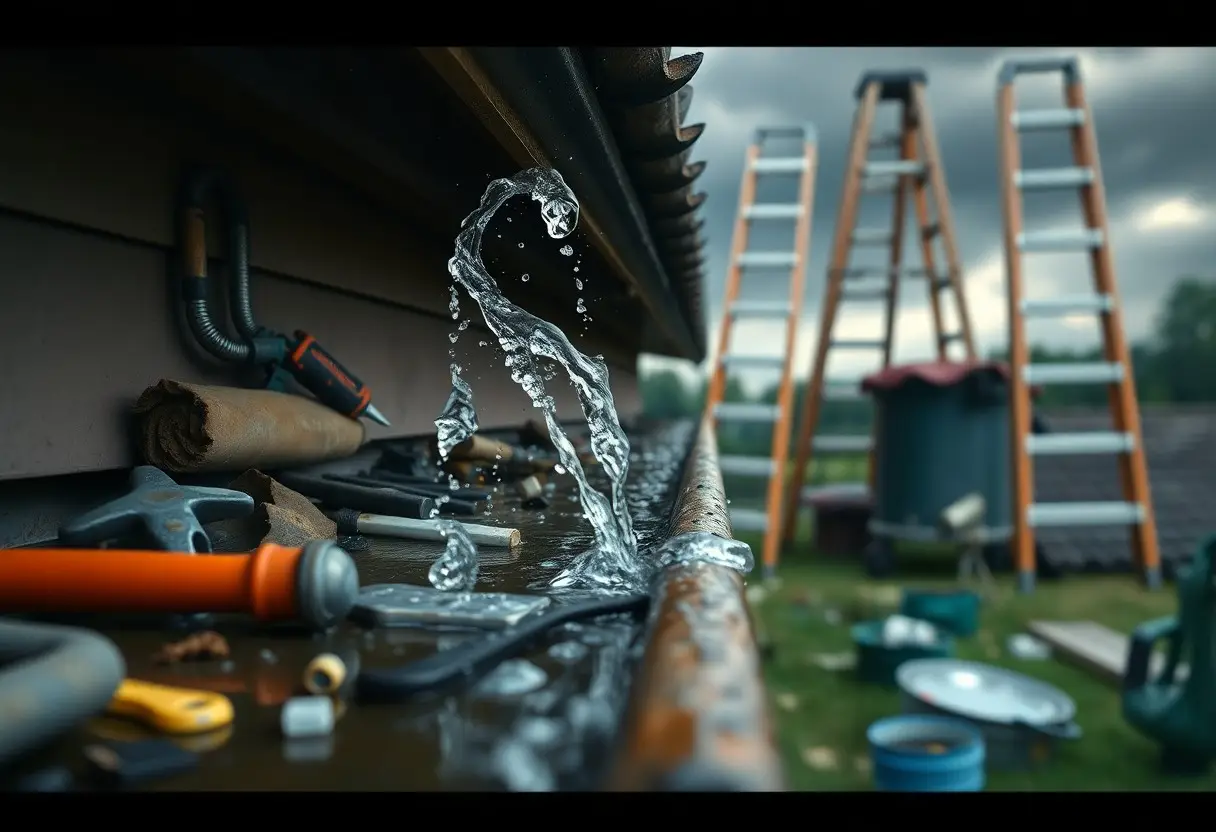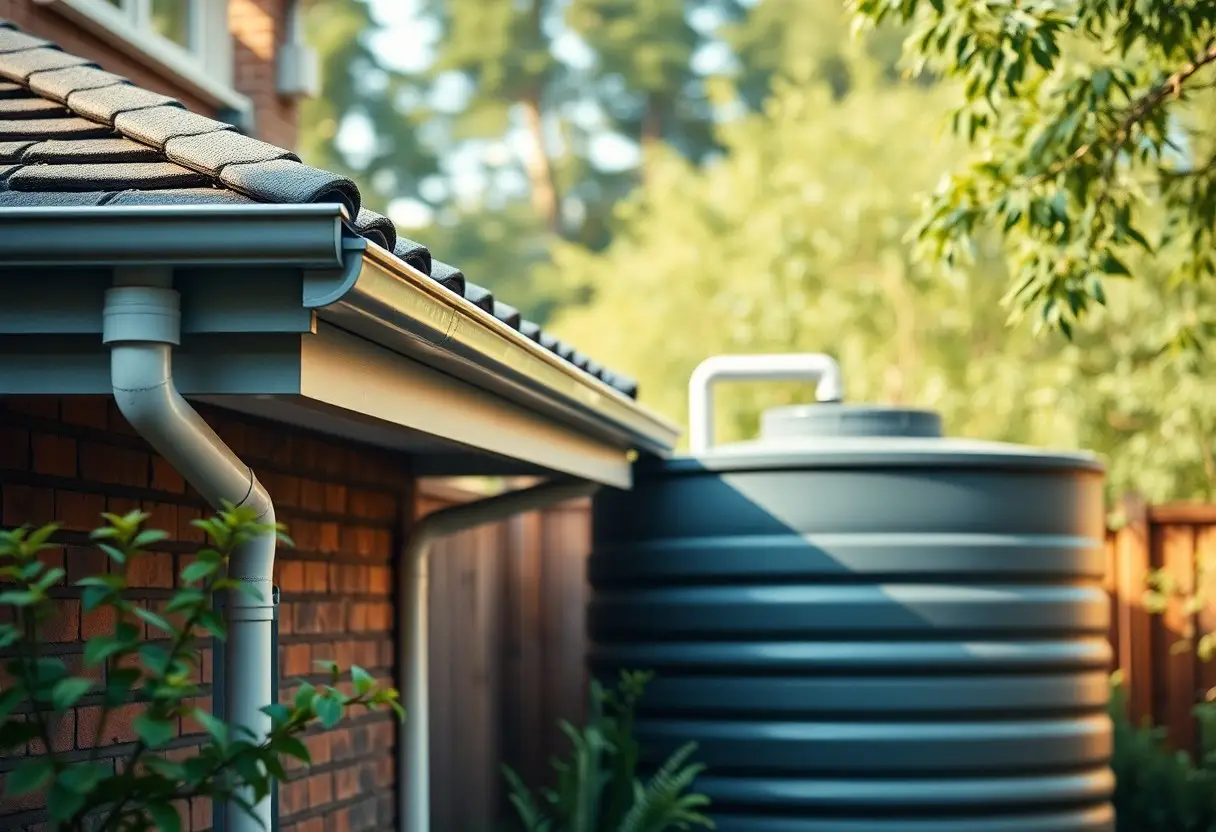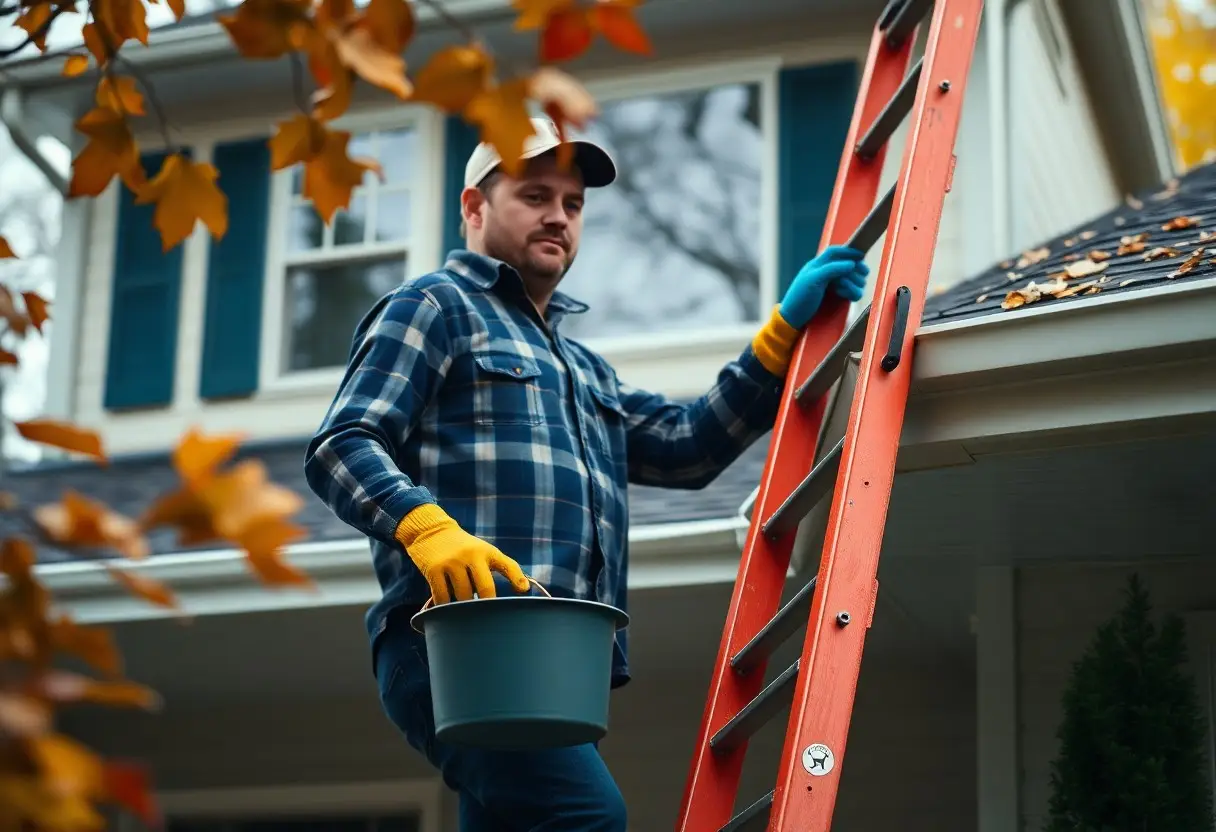There’s a sense of urgency when your gutters sustain storm damage, as this can lead to serious issues like water infiltration and foundation damage. In this guide, you’ll learn how to assess the damage quickly and take immediate action to prevent further complications. By following these important steps, you can safeguard your home and minimize repair costs. Your prompt response can make all the difference in maintaining the integrity of your property and ensuring it stays safe during adverse weather conditions.
Key Takeaways:
- Assess the extent of the storm damage as soon as it is safe to do so, checking for blockages, sagging, or detachment.
- Implement temporary fixes like using a tarp or duct tape to cover gaps until a permanent repair can be arranged.
- Schedule a professional inspection to ensure all damage is addressed and to prevent future issues with your gutter system.
Understanding Storm Damage
To effectively address gutter issues post-storm, it’s crucial to recognize the nature and extent of the damage sustained during severe weather. Storms can cause significant harm to your gutters, leading to potential long-term issues if left unchecked. Identifying the type of damage early allows you to act swiftly and prevent further complications.
Types of Damage to Gutters
- Cracks in the gutter material
- Corrosion or rust from persistent moisture
- Separation of gutter joints
- Loose or detached sections
- Overflow from clogging
Recognizing these types of damage will help you determine the necessary repairs and maintenance for your gutters.
| Type of Damage | Symptoms |
| Cracks | Water leakage from gutter |
| Corrosion | Visible rust spots |
| Separation | Gutters pulling away from structure |
| Loose Sections | Sections swaying with wind |
| Overflow | Water pouring over side during rain |
Signs of Urgent Repair Needs
Any visible issues with your gutters after a storm should raise a red flag. This includes signs such as overflowing water, pooling around your home’s foundation, or detached gutter sections. Ignoring these indicators can lead to more extensive damage, requiring costly repairs and posing a risk to your property.
In addition to seeing water accumulated near your house, check for gutter sagging or loosely hanging sections. A persistent leak can damage your siding or roof, leading to molding or structural weakening. It’s vital to assess any rust or corrosion as they signal potential structural failure. Taking action will help you maintain the integrity of your home and avoid serious hazards.

Immediate Actions to Take
Clearly, after a storm, your first step is to inspect your gutter system for any signs of damage. Assess the level of destruction and identify any immediate risks, including debris accumulation or sagging sections that might pose hazards. Taking prompt action can prevent further complications and protect your home from water damage.
Safety First: Assessing the Situation
Assessing the aftermath of storm damage starts with ensuring your safety. Check for downed power lines or unstable structures around your home before approaching your gutters. Wear sturdy shoes and work gloves, and consider using a ladder to evaluate higher sections of your gutter system only if it’s safe to do so.
Temporary Fixes for Gutter Damage
Damage to your gutters may require quick, temporary solutions to avert any immediate water damage. Use tarps or plastic sheeting to cover any large openings to prevent water from leaking into your home. Secure these materials with heavy objects or ropes until you can conduct a full repair.
It is crucial that you act swiftly in implementing temporary fixes for gutter damage. Utilize duct tape to seal small leaks or holes, ensuring a tight bond to minimize further water intrusion. If you notice any sagging, prop up the affected area with wooden planks or similar supports to redirect water flow back into the gutter system. Taking these immediate actions can protect your home from further damage while giving you time to plan a comprehensive repair.
Tools and Materials Needed
All homeowners should have the right tools and materials on hand for emergency gutter repair. Quick access to these items can help you address storm damage effectively and protect your home from further issues. Make sure to gather everything you need before commencing your repairs to save time and minimize risk.
Essential Tools for Gutter Repair
Above all, you will need a sturdy ladder to reach your gutters safely and a pair of work gloves to protect your hands. Additional tools like a trowel, screwdrivers, and a sealant gun will equip you to tackle most common issues effectively.
Materials for Quick Repairs
About the materials, having the right supplies is vital for making swift, effective repairs. You may need items such as gutter sealant, screws, and metal flashing to secure and waterproof your gutters properly.
For instance, gutter sealant is necessary for filling gaps and leaks, while heavy-duty screws can help reattach loose segments. You may also want to keep metal flashing handy; it can divert water away and prevent further erosion. These materials not only enable you to complete quick repairs but also help to enhance your gutters’ resilience against future storms.

Step-by-Step Guide to Emergency Repairs
Once again, addressing gutter damage swiftly can prevent further issues. Follow this simple step-by-step guide:
| Step | Description |
|---|---|
| 1 | Assess the damage safely from the ground. |
| 2 | Clear debris that may be causing blockages. |
| 3 | Use a temporary patch for minor leaks with waterproof tape. |
| 4 | Secure any loose gutters or downspouts with screws. |
| 5 | Plan for permanent repairs as soon as conditions allow. |
Repairing Minor Damage
Repairing minor damage involves quick solutions you can undertake yourself. Start by removing any debris clogging the gutters to allow proper drainage. Next, take waterproof tape and apply it over small leaks. If downspouts are loose, secure them with screws to prevent further detachment. This action helps protect your home from future water damage.
Addressing Major Issues
On the other hand, major issues require immediate attention from professionals. If your gutters are sagging, heavily dented, or large portions are missing, the problem may be beyond what you can handle on your own.
In addition, these complications can lead to serious water damage to your home’s foundation and landscape. It’s important to avoid working on compromised gutters yourself, as it poses safety risks. Instead, contact a licensed roofing or gutter specialist to ensure the repairs are done correctly and to assess any underlying structural damage. Prioritize these repairs to protect your investment and maintain your home’s integrity.
Preventative Measures
Keep your gutters in top shape to minimize potential storm damage. Regular checks and maintenance ensure they remain functional, preventing costly repairs. Consider implementing the following measures:
- Inspect for debris accumulation and clear it away.
- Check for leaks and seal them promptly.
- Ensure downspouts direct water away from your foundation.
Assume that a little maintenance can save you from extensive damage down the line.
Regular Maintenance Tips
Between storms, it’s necessary to maintain your gutters to avoid future problems. Schedule regular cleanings and assessments at least twice a year. Look for signs of wear like rust or cracks and address them swiftly. A proactive approach will keep your gutters functioning effectively, ensuring they can handle heavy rainfall. Assume that taking these simple steps will prolong the life of your gutter system.
Preparing for Future Storms
An effective storm preparedness plan includes ensuring your gutters are ready for intense weather. Inspect them thoroughly by checking for blockages or rust, and have them cleaned right before storm season. Consider installing gutter guards to keep debris out, increasing their efficiency. You should also assess your roof and drainage systems to identify any potential issues before a storm hits.
Measures you take now can significantly affect your home’s resilience against severe weather. This means investing in quality gutter systems that can withstand heavy rains, ensuring downspouts are properly angled, and securing your roof. Following these tips enhances your home’s protection while promoting the longevity of your gutters. Taking action early will not only mitigate damage but can also positively impact your home value and safety during storms.
How Can Proper Gutter Cleaning Help Prevent Storm Damage and Emergency Repairs?
Proper gutter cleaning steps for homeowners explained are crucial in preventing storm damage. Clogged gutters can lead to water overflow, causing roof leaks and structural issues. By regularly following these steps, homeowners can ensure water flows freely, reducing the risk of costly emergency repairs and safeguarding their property from severe weather impacts.
When to Call a Professional
Your time is valuable, especially after a storm. If your gutters are severely damaged, overflowing, or showing signs of significant wear, it’s wise to call a professional. Delaying repairs could lead to more extensive water damage and costly repairs, compromising the integrity of your home. Trusting the experts ensures your gutter system is restored to optimal performance.
Indicators for Professional Help
An obvious indicator that you need professional help is visible damage, such as large dents, sagging sections, or extensive rust. Additionally, if you notice water pooling around your foundation or in your yard following rainfall, it’s a clear sign that your gutters aren’t functioning correctly. These issues require expert intervention to prevent further damage.
Finding the Right Gutter Professional
Above all, selecting the right gutter professional is imperative for effective repairs. Look for local contractors with verified reviews and a strong reputation. Ensuring they are licensed and insured will provide peace of mind and protect you from liability in case of accidents during the repair process.
Even if it seems daunting, finding the right gutter professional can greatly enhance your gutter system’s longevity. Ask for recommendations from friends or family, and conduct thorough online research. Prioritize contractors who offer warranties on their work and use high-quality materials. A reliable professional can save you time and money while ensuring your system functions correctly, reducing potential hazards and future repair costs.
Summing up
Now that you understand the steps to take for emergency gutter repair after storm damage, you can act quickly to prevent further issues. Assess the damage, clear debris, and temporarily secure any loose components to protect your home. Reach out to professionals for a thorough inspection and permanent repairs as soon as possible. Being proactive not only safeguards your property but also saves you from costly future repairs.
Q: What immediate steps should I take to assess gutter damage after a storm?
A: After a storm, the first step is to safely inspect your gutters for any visible signs of damage. Use a sturdy ladder to check for sagging, separation from the house, or holes. Look for debris buildup that may block water flow. If you notice any missing or damaged sections, it’s vital to document this with photographs for insurance purposes and consider calling a professional to evaluate the situation further.
Q: How can I temporarily fix a damaged gutter until a professional can help?
A: For temporary repairs, you can use a waterproof tape or tarp to cover any holes or leaks in the gutter. Ensure the area is clean and dry before applying the tape. If a section has detached, try to reattach it securely using screws and brackets, but avoid climbing on a roof or high surface if you’re not equipped or trained to do so. It’s important to stabilize the gutter to prevent further damage until a permanent repair can be made.
Q: What should I do if I suspect my gutters have caused water damage to my home?
A: If you suspect that damaged gutters have led to water issues inside your home, such as leaks or mold, it’s vital to act quickly. First, remove any nearby items that may be affected by water. Document the damage and contact a water damage restoration specialist if necessary. Consider hiring a roofing or gutter professional to inspect your system and determine if repairs are needed to prevent future issues.


